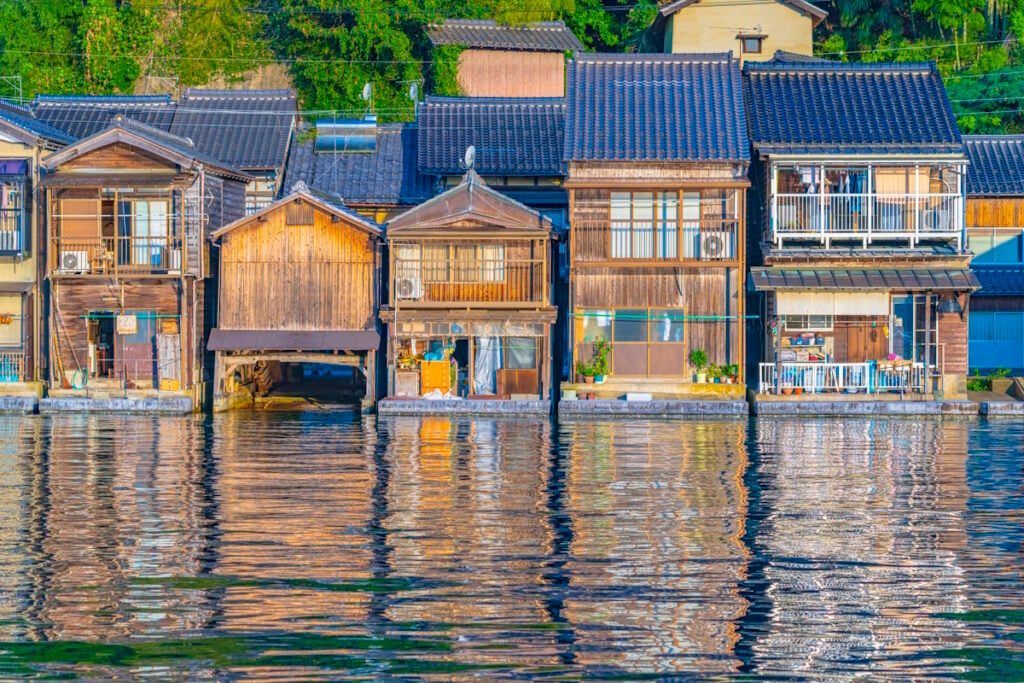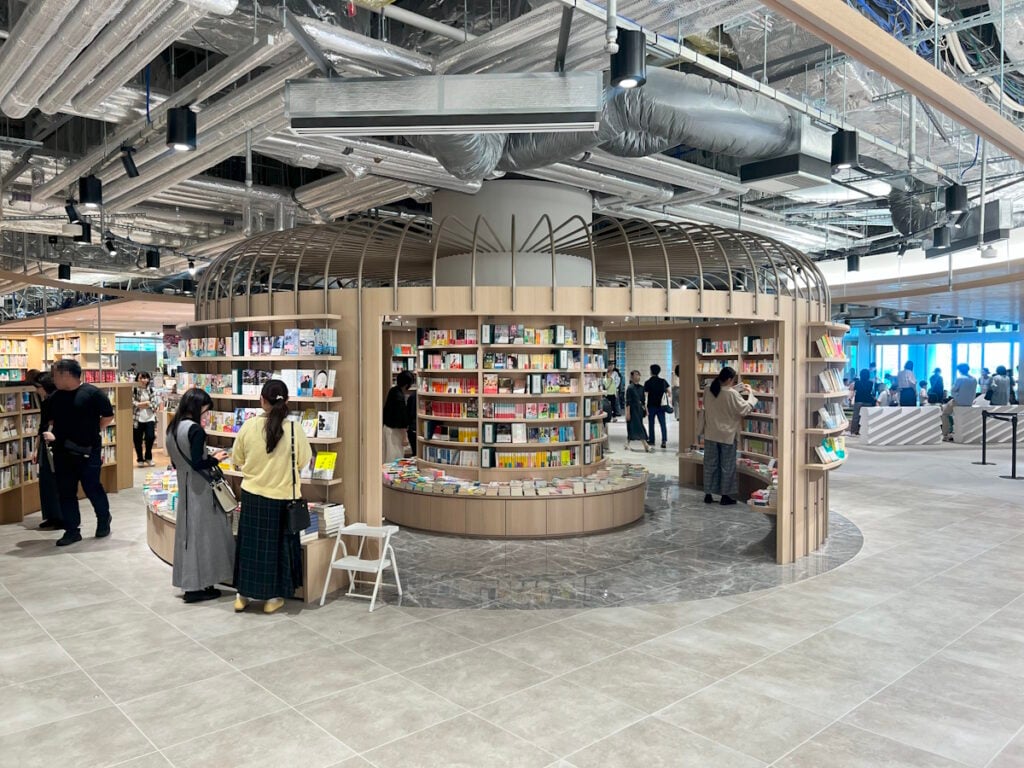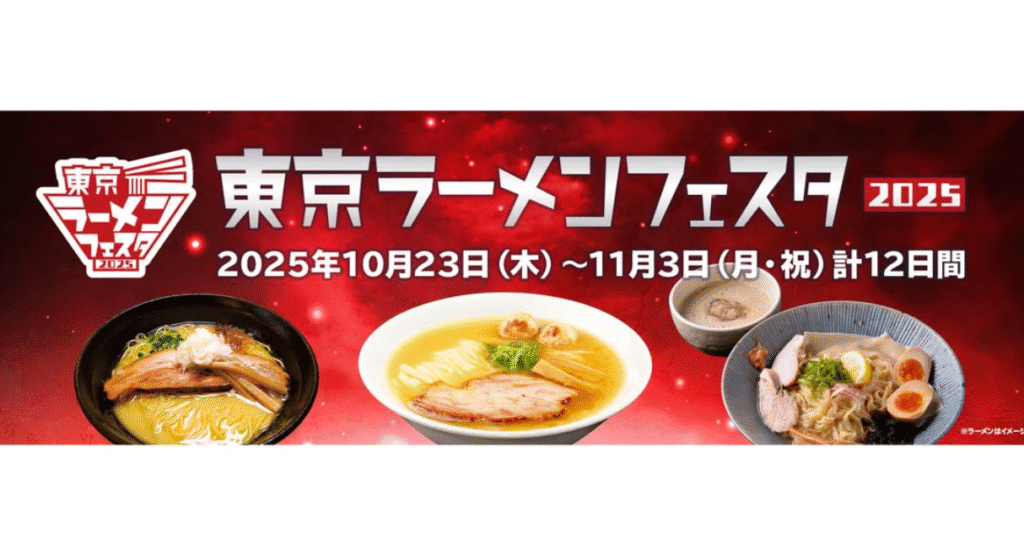Some in Japan like their meat tender. Maybe a little too tender. A trend related to one of the country’s most famous yoshoku (洋食; Western-style) dishes went wrong at one restaurant – and 34 people paid for it.
Table of Contents
ToggleWhy eat your food when you can drink it?

The dish in question is the famous Japanese hamburg (ハンバーグ; hambaagu). Unlike a burger (バーガー in Japanese), a hamburg is more like a hamburger steak, served as is with toppings – usually a demiglace sauce or grated daikon.
A Japanese hamburg consists of ground meat, onions, bread crumbs, egg, and a little milk and seasonings mixed together. You then sear each side and cook it to serving temperature – either by steaming it with water on a stovetop or baking it in an oven. This brings the hamburg up to a safe serving temperature (160F; 71C) while still retaining a light, moist interior.
You can get Japanese hamburg at family restaurants in Japan or dedicated Japanese hamburg chains like Bikkuri Donkey. Restaurants typically serve the dish on a hot, sizzling plate – sometimes even with a splatter guard to prevent mess. This lends an additional air of theatrics to the presentation. It also adds additional cooking time to the hamburg.
However, some restaurants in Japan are serving a version that’s medium rare or even close to rare. The so-called “drinkable hamburg” has proven a hit among customers who like to hit it raw.
Insufficient heat fails to kill E. coli

The progenitor of the “drinkable hamburg” appears to be the subject of today’s story. Shoutaian Diner in Funabashi, Chiba Prefecture, has sold its drinkable Japanese hamburg with A5 rank Kuroge Wagyu ground beef since 2019. An old TBS news report says that, at the 2019 Meat Festival, the store sold 30,000 of the hamburgs in 10 days.
Up until now, the store hasn’t had an incident. However, customers who ate at the diner between August 24th and August 28th, 2024, reported symptoms such as abdominal pain and diarrhea.
Funabashi’s Health Department says the culprit is Enterohemorrhagic E. coli O157. The agency says it suspects the infection happened sometime during delivery of the meat. Killing enterohemorrhagic E. coli requires heating meat up to a temperature of 75C – 167F, or past well done – to kill it.
Planning a trip to Japan? Get an authentic, interpreted experience from Unseen Japan Tours and see a side of the country others miss!

"Noah [at Unseen Japan] put together an itinerary that didn’t lock us in and we could travel at our own pace. In Tokyo, he guided us personally on a walking tour. Overall, he made our Japan trip an experience not to forget." - Kate and Simon S., Australia

See a side of Tokyo that other tourists can't. Book a tour with Unseen Japan Tours - we'll tailor your trip to your interests and guide you through experiences usually closed off to non-Japanese speakers.


Want more news and views from Japan? Donate $5/month ($60 one-time donation) to the Unseen Japan Journalism Fund to join Unseen Japan Insider. You'll get our Insider newsletter with more news and deep dives, a chance to get your burning Japan questions answered, and a voice in our future editorial direction.
One infected customer has reportedly developed hemolytic-uremic syndrome, anemia caused by the destruction of red blood cells. The disease usually only occurs in children…or in people who’ve been infected with O157.
Customers who’ve been to Shoutaian Diner to have the drinkable hamburg say that the restaurant advises using the hot plate to cook the undercooked interior. Staff tell consumers to cook the redness out of the meat prior to consuming.
Is Japanese hamburg safe?

Japan’s food supply chain generally has a strong reputation for excellent food safety. For example, raw eggs are a component of multiple dishes here – a feat made possible by strict regulations that prevent both on-shell and in-shell salmonella.
There are, of course, exceptions. One of the most notable was a restaurant in Ishikawa Prefecture that poisoned 93 people with nagashi somen noodles. Nagashi somen is typically served via a long, flowing bamboo shoot in running river water. In this case, the store used a source infected with campylobacter bacteria.
However, in general, restaurants in Japan feel a responsibility to…well, not poison their customers. Additionally, the reputational blowback from an incident such as this can be severe enough to shut a place down.
Other Japanese hamburg chains say: Don’t worry, we cook our food
Ground beef is tricky because it’s hard to serve safely at anything less than well done. Serving steaks medium rare is generally fine because the interior is never exposed. However, the grinding and handling of ground beef at a butcher’s or factory makes it more susceptible to an E. coli or salmonella infection.
Other Japanese hamburg chains interviewed in the wake of this story say they always cook their hamburg to well done. This usually involves cooking for four minutes on a hot plate, then transferring to an oven for 12 minutes.
The chain owners also emphasized that they feel an extra responsibility to ensure food safety given that the risk of spoilage is higher thanks to Japan’s extended summer heat. In other words, you probably shouldn’t worry about enjoying a Japanese hamburg on your stay here.
Planning a trip to Japan? Get an authentic, interpreted experience from Unseen Japan Tours and see a side of the country others miss!

"Noah [at Unseen Japan] put together an itinerary that didn’t lock us in and we could travel at our own pace. In Tokyo, he guided us personally on a walking tour. Overall, he made our Japan trip an experience not to forget." - Kate and Simon S., Australia

See a side of Tokyo that other tourists can't. Book a tour with Unseen Japan Tours - we'll tailor your trip to your interests and guide you through experiences usually closed off to non-Japanese speakers.


Want more news and views from Japan? Donate $5/month ($60 one-time donation) to the Unseen Japan Journalism Fund to join Unseen Japan Insider. You'll get our Insider newsletter with more news and deep dives, a chance to get your burning Japan questions answered, and a voice in our future editorial direction.
Even Shoutaian Diner appears to have taken that advice to heart. The store re-opened for business on September 9th, promising it’s implemented preventative measures. A customer who ordered the “drinkable hamburg” said it appeared thoroughly cooked and “not drinkable at all.”
Why this page doesn't look like crap
You may notice a few things about this page. First, it’s mostly content – not ads. Second, this article was written by a human, not a plagiaristic Turing machine.
Unseen Japan is a collective of independent authors. We work hard to keep our content free of intrusive ads and AI slop.
Help us keep it that way. Donate to the Unseen Japan Journalism Fund to support our work. Regular donors will receive Insider, our paid newsletter with weekly bonus content about Japan. Plus, your contribution will help us produce more content like this.
What to read next

Eating On People’s Porches: Overtourism Overwhelms Ine, Japan’s “Venice of the East”
The iconic boat house village saw nearly 480,000 visitors in 2024 – an estimated 270 times its population.

Bunkitsu Tokyo: New, Sprawling Bookstore Cafe Is a Wonderland of Relaxation
The massive new bookstore, with over 100,000 books, offers three cafes where you can choose to hang out for an hour – or even all day.

Tokyo Ramen Festa Showcases Dish’s Regional Variety Over 12 Days
Here’s your chance to try some of Japan’s best ramen from across the country in a single location in Tokyo’s Setagaya City.
Sources
「飲めるハンバーグ」でO157食中毒34人発症…客が“追い焼き”するスタイルで加熱不十分か 暑い時期の調理は特に要注意! FNN Prime Online
「肉フェス常連」新触感「飲めるハンバーグ」が大人気!そのヒミツとは?TBS News Dig
Why eating a rare burger is more dangerous than eating a rare steak. TODAY
「飲めるハンバーグ」食中毒 患者1人がHUSを発症、入院中 船橋. Chiba Nippou

